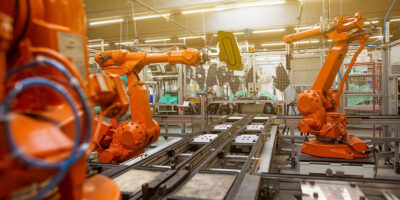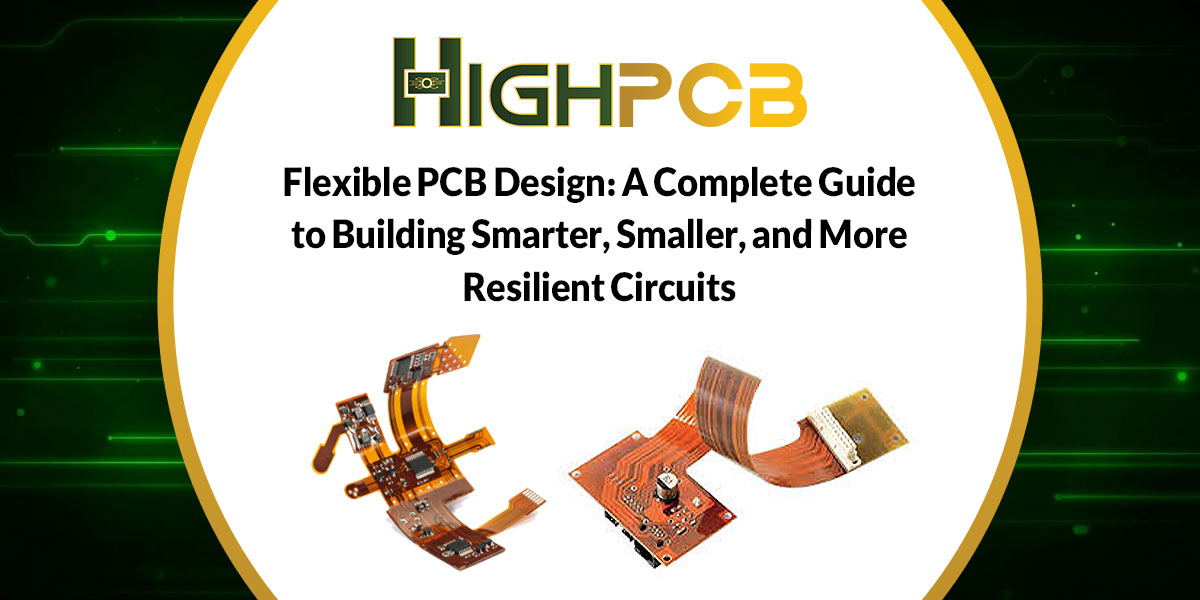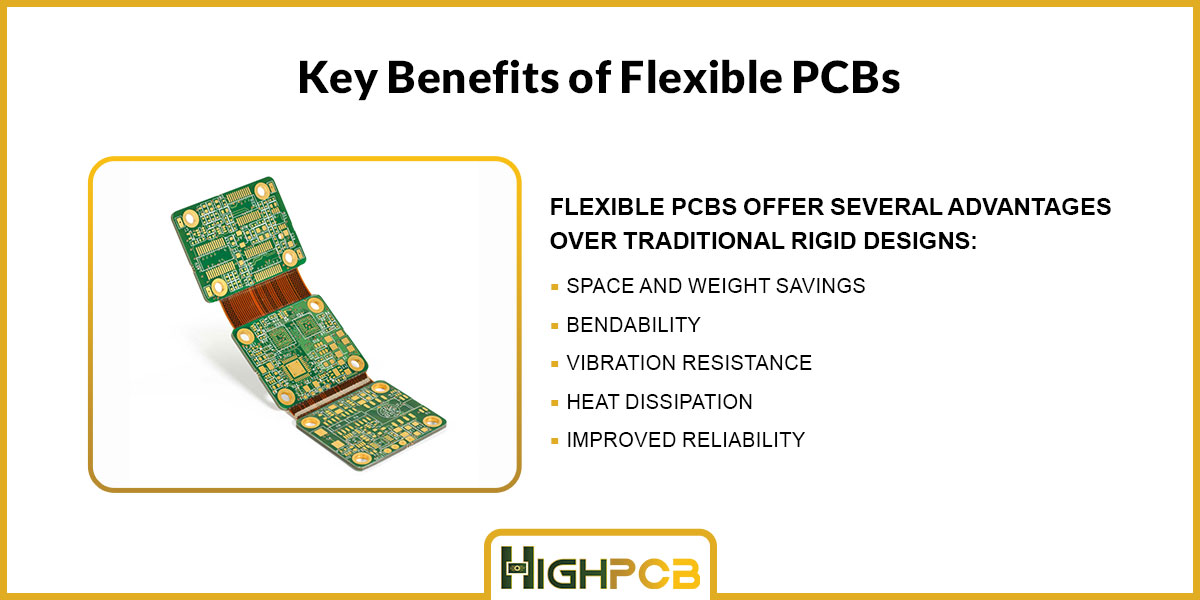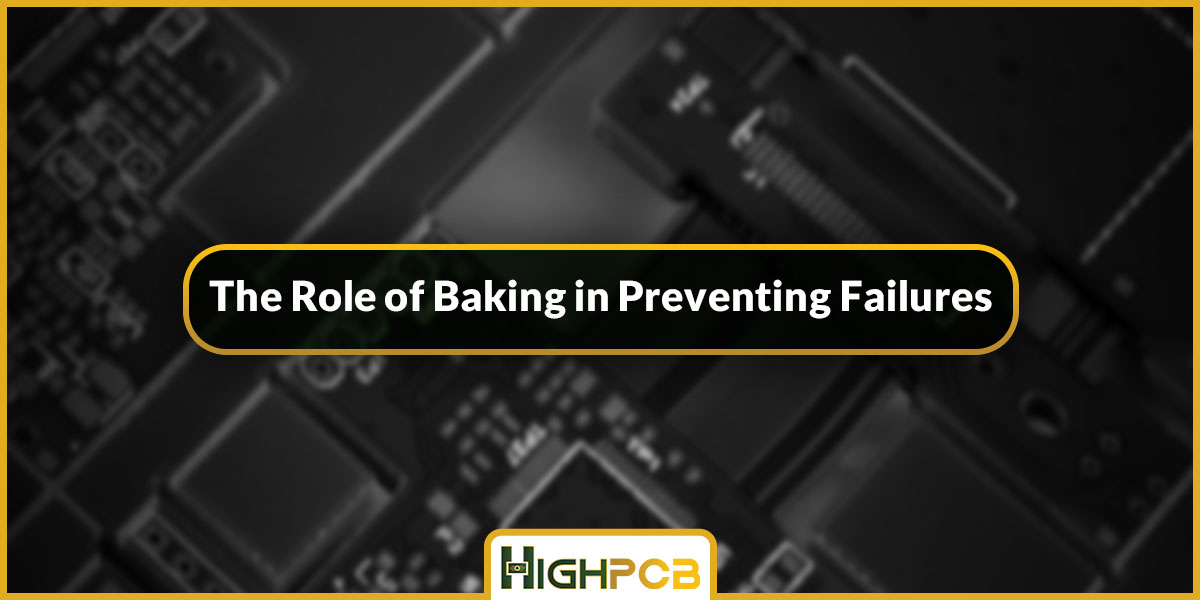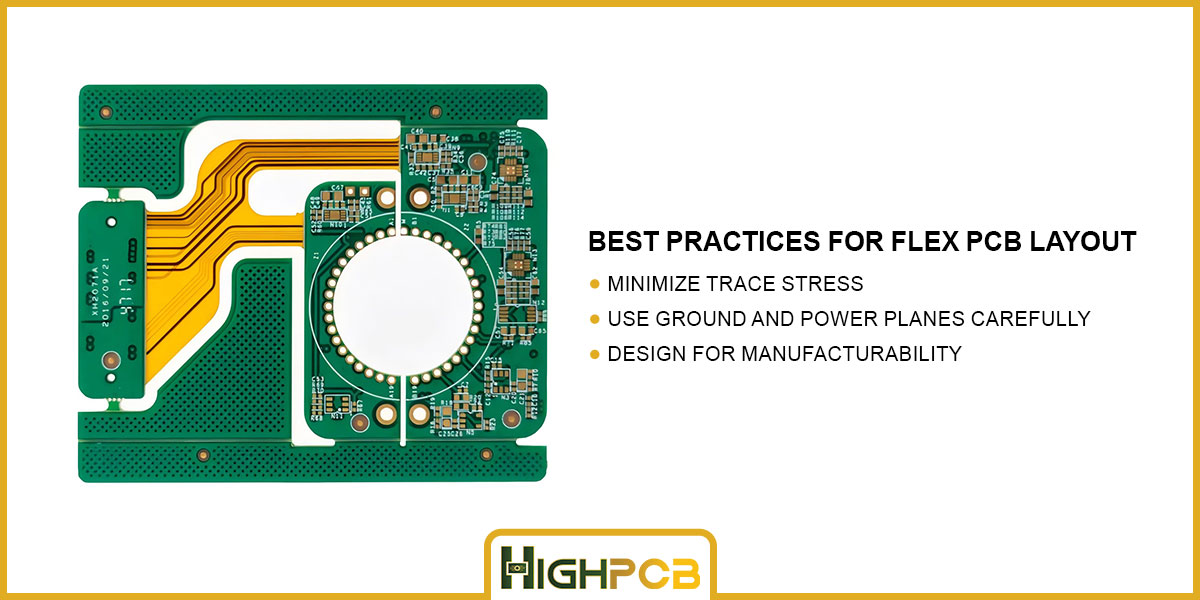In the world of modern electronics, the demand for devices that are lighter, smaller, and more versatile is higher than ever. From wearable health monitors to foldable smartphones and aerospace systems, the need for compact yet durable circuitry is driving innovation in PCB design. At the forefront of this evolution is the Flexible Printed Circuit Board (Flexible PCB) — a game-changing solution that offers unique advantages over traditional rigid PCBs.
In this comprehensive guide, we’ll explore what Flexible PCBs are, where they’re used, the challenges in designing them, and how HighPCB helps customers worldwide implement flexible solutions with precision and reliability.
What Is a Flexible PCB?
A Flexible PCB (also known as Flex Circuit) is a type of circuit board that can bend, twist, and conform to the shape of the product it powers. Unlike standard rigid PCBs made from fiberglass (FR4), flexible PCBs are usually constructed using polyimide or polyester films, making them ideal for applications where space constraints or mechanical stress are major concerns.
These circuits can function in dynamic environments, endure multiple flexing cycles, and integrate seamlessly into complex three-dimensional electronic assemblies.
Key Benefits of Flexible PCBs
Flexible PCBs offer several advantages over traditional rigid designs:
- Space and Weight Savings: Flex circuits are thin and lightweight, enabling miniaturization of devices.
- Bendability: They can be folded or wrapped around contours, allowing design freedom in product development.
- Vibration Resistance: Their flexible nature makes them less prone to cracking under vibration or thermal cycling.
- Heat Dissipation: Polyimide-based substrates often handle thermal stress better than FR4.
- Improved Reliability: Fewer connectors and solder joints mean fewer points of failure.
Where Are Flexible PCBs Used?
Flexible PCBs are crucial in industries that demand compactness, reliability, and performance in challenging environments:
- Wearables: Smartwatches, fitness trackers, medical patches.
- Medical Devices: Pacemakers, hearing aids, surgical instruments.
- Consumer Electronics: Foldable smartphones, digital cameras, LCD displays.
- Automotive Electronics: Airbag systems, sensors, dashboard controls.
- Aerospace & Military: Guidance systems, satellites, communication devices.
Design Considerations for Flexible PCBs
Designing a flexible PCB involves more than just substituting rigid materials with flexible ones. You must consider factors like mechanical stress, bending radius, and environmental exposure.
- Material Selection
- Polyimide: Most commonly used due to its thermal resistance and flexibility.
- Polyester (PET): Cheaper but less heat-resistant.
- Bend Radius
- Avoid sharp bends. Maintain a minimum bend radius (typically 6 to 10 times the thickness of the material).
- For dynamic applications, increase bend radius to prevent fatigue.
- Conductor Layout
- Avoid 90° angles in trace routing; use smooth, curved paths.
- Keep traces perpendicular to the bend direction for durability.
- Use tear-drops at pad-trace junctions to reduce stress concentration.
- Layer Structure
- Single-layer flex circuits are most flexible; multi-layer designs increase functionality but reduce flexibility.
- Place stiffeners strategically to support components and connectors.
- Avoiding Vias in Bending Areas
- Place vias only in static zones to prevent cracking.
Common Challenges in Flexible PCB Design
Despite their advantages, flexible PCBs present a few design and manufacturing challenges:
- Higher Cost: Material and process costs are generally higher than standard PCBs.
- Mechanical Reliability: Long-term flexing can lead to metal fatigue if not properly designed.
- Assembly Complexity: SMT and through-hole components may require special fixturing or processing.
- Limited Component Placement Area: Only specific areas are reinforced for mounting.
Best Practices for Flex PCB Layout
- Minimize trace stress: Use wider traces and avoid via stacking.
- Use ground and power planes carefully: Ensure return paths are optimized to reduce EMI.
- Design for manufacturability: Coordinate with your PCB manufacturer early in the design phase to validate bend zones, materials, and stack-up.
Materials Commonly Used in Flex PCBs
| Material | Purpose | Key Traits |
| Polyimide | Substrate | High heat resistance, flexible, durable |
| Rolled Annealed (RA) Copper | Conductor | Better bend endurance than ED copper |
| Adhesiveless Laminates | Improved flexibility | Thinner and stronger connections |
| Coverlay (Polyimide film + adhesive) | Protection | Insulates and seals traces |
Choosing the right combination of materials is critical for durability and performance.
How Flexible PCBs Are Manufactured
The manufacturing process for flex PCBs differs from rigid boards:
- Substrate Preparation: Polyimide sheets are laminated with copper.
- Pattern Imaging and Etching: Circuit patterns are created using photolithography.
- Drilling and Plating: Laser or mechanical drills are used, and vias are plated with copper.
- Coverlay Application: Insulating films are applied instead of solder masks.
- Stiffener Placement: Applied in component-heavy areas.
- Final Inspection and Testing: AOI, E-test, and flex tests ensure quality.
At HighPCB, we implement rigorous quality control protocols at every step to ensure zero-defect output.
Testing and Quality Assurance for Flexible PCBs
Quality is crucial, especially in critical applications like medical and aerospace.
- Dynamic Flex Testing: Boards are flexed repeatedly to simulate real-world use.
- Thermal Cycling: Checks resistance to temperature changes.
- Moisture Resistance Testing: Ensures stability in humid environments.
- Electrical Testing: Verifies conductivity and continuity.
HighPCB follows IPC-6013 and IPC-A-600 standards for flexible circuits.
Why Choose HighPCB for Your Flexible PCB Projects?
At HighPCB, we specialize in designing and producing flexible circuit boards tailored to your specifications. Whether you need a prototype or mass production, we ensure:
- ✅ IPC-certified quality
- ✅ Rapid prototyping and fast turnaround
- ✅ Expert DFM analysis
- ✅ Full technical support during the design phase
We’re more than a manufacturer — we’re your engineering partner.
👉 Ready to bring your flex design to life? Get a Free Quote or contact us for technical consultation.
Conclusion
Flexible PCB design is essential for next-generation electronics that require space-saving, robust, and high-performance circuits. While it comes with its own design challenges, the benefits are substantial — especially when working with a skilled manufacturer like HighPCB. Whether you’re creating wearables, medical instruments, or aerospace systems, flexible circuits will empower your innovations.


